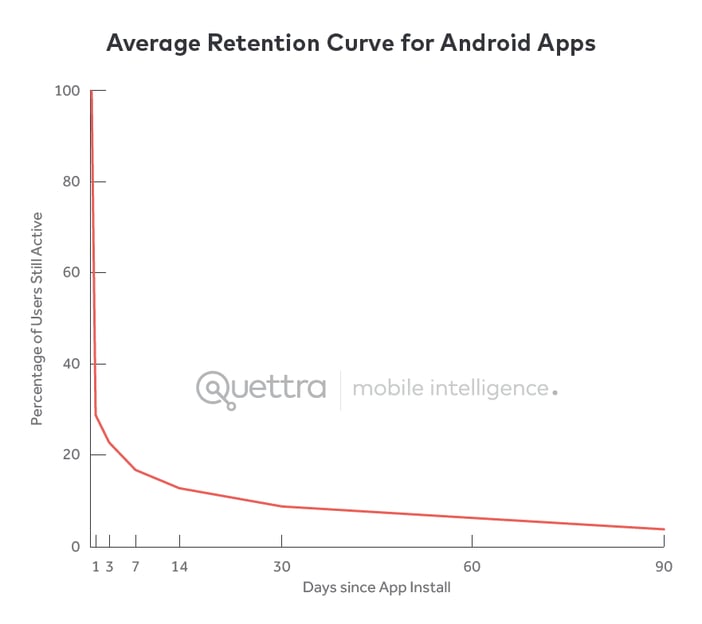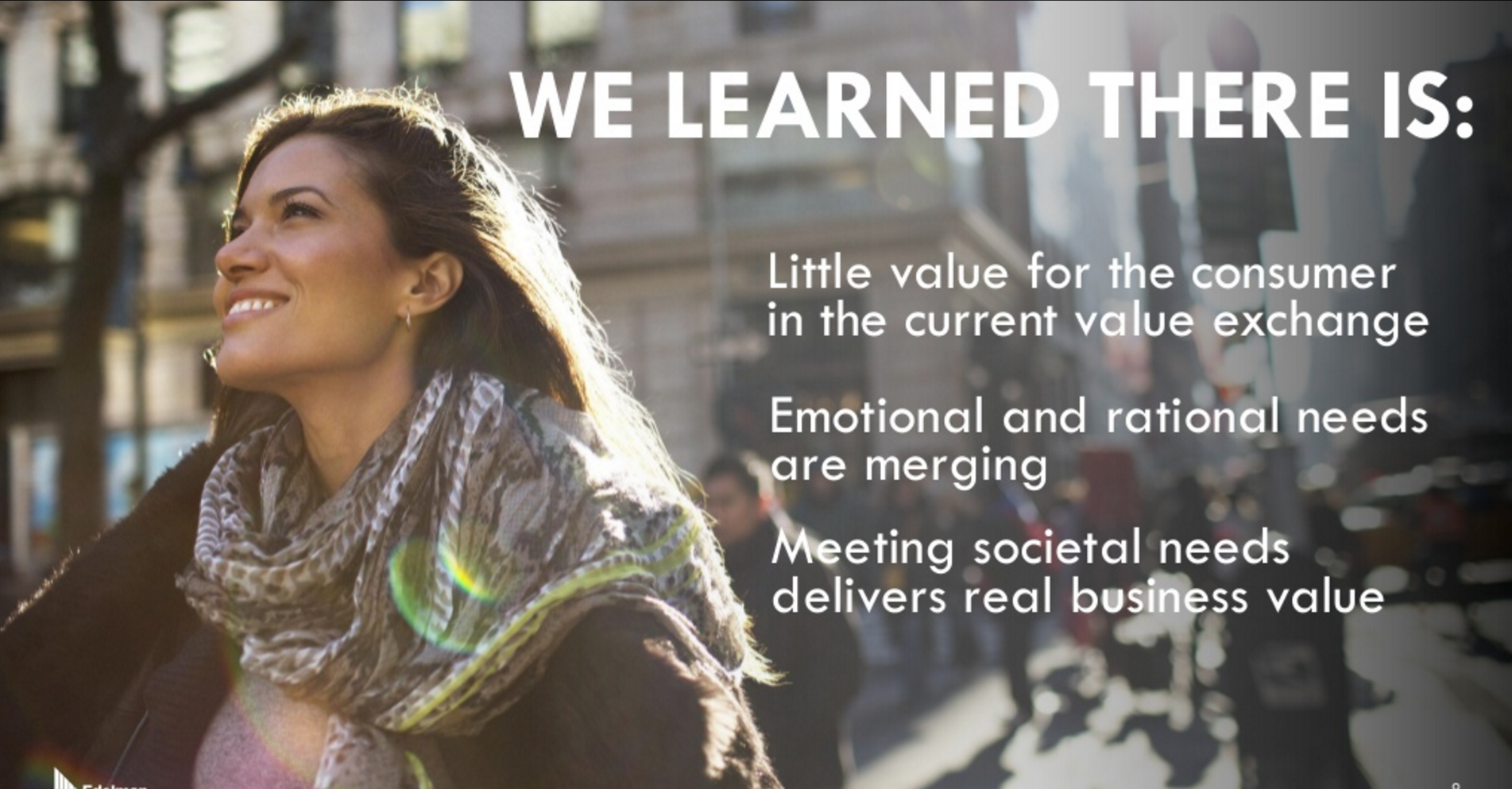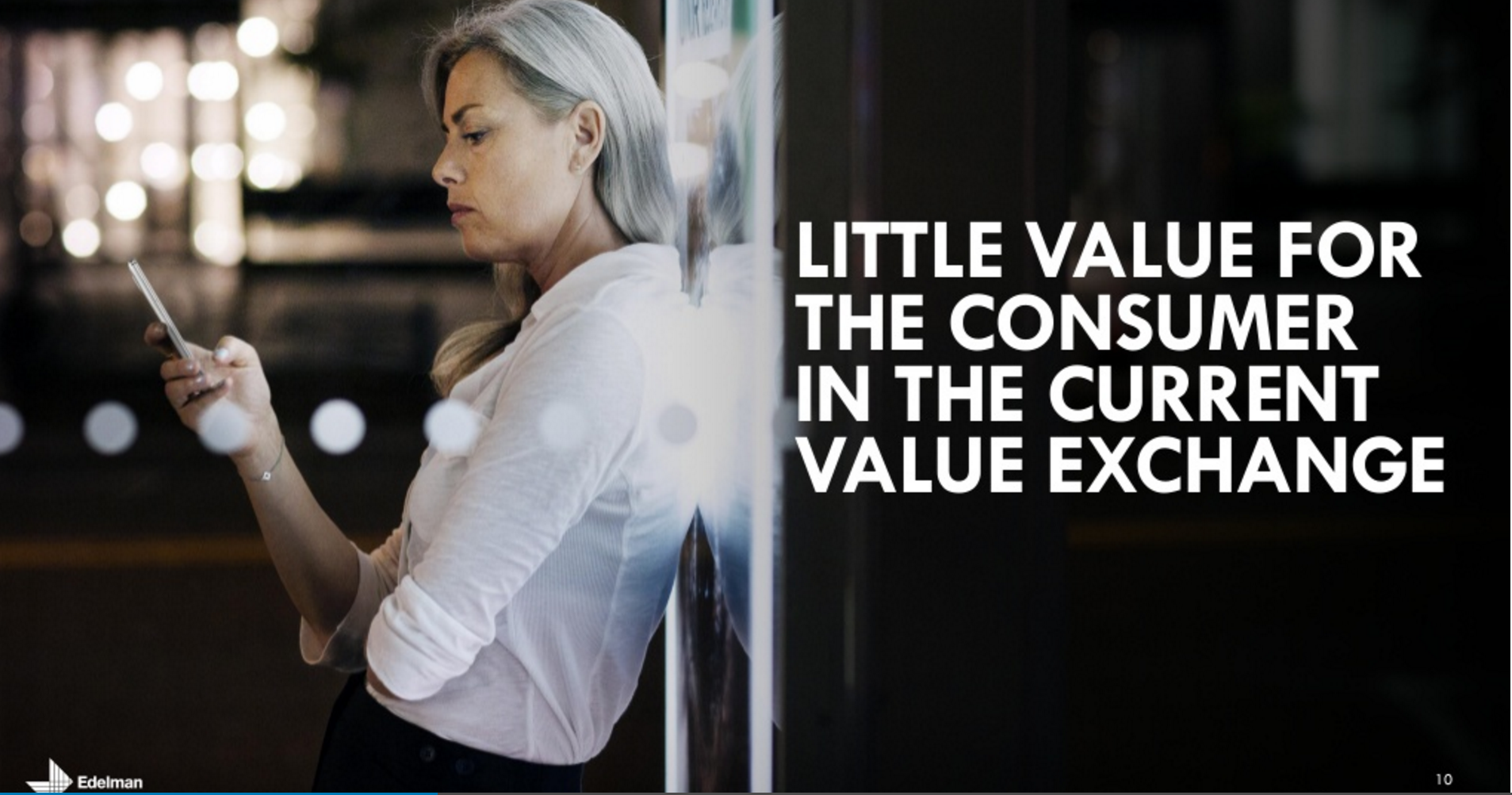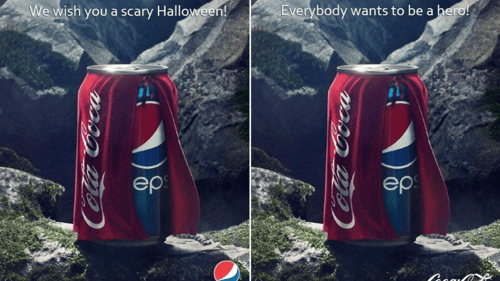Go all the way back to hunter-gatherers in the Neolithic age and one piece of flint could be exchanged for obsidian to craft into a weapon. Trade one thing for another in an exchange of value.
The value exchange.
The crux of modern business and marketing. Sir Terry Leahy, one-time CEO of Tesco, once described his approach to marketing thusly:
“Always look around, at customers, people, their lives, their problems, fears and hopes. Out of that empathy, the truth emerges. If you go on listening, they will give you your strategy. I never had to look for growth. I just listened to customers talk about how their lives were changing and the direction they were going in. Follow and stay close – then be the first to respond when a need emerges.”
Of course, there's a certain hint of irony as Tesco has slumped down the Irish grocery market. It's easier, too, with FMCG. The value of the exchange is in something tangible.
But what happens when engagement or information or data is the required currency?
The digital value exchange: a primer on the 'currency'
How much is an email worth to a customer? Or their personal details? Or the minutiae of their day like what they might have for breakfast or the types of apps they might download based on their browsing activity?
Let's look at an example. Pokemon Go.
In the opening fortnight of its launch, Pokemon Go asked for access to the user's entire Gmail account. As someone with two-factor authentication and a tight lock on my Gmail, the early revelations spooked me - but not enough to stop me using the app. The value exchange was potentially worth letting Niantic read the really fascinating emails I get on Gmail.
The permissions were quickly patched and fixed and the mountain in the molehill wasn't enough to scare users off. Where data is the currency, we're far more likely to hand over precious details or access on mobile. But, away from a physical item, what are the rewards for data?
After all, whole companies live and die by the perceived value.
1. Content value exchange
I've written before about the mistake in treating content like an advertisement. Do that and you'll kill your ROI. Murder it dead. If you're creating content without value for your consumer, you're creating soulless advertising.
Case in point: on Instagram I'm being stalked by an ad from a shampoo brand. The ad is a hand holding a bottle of the shampoo. That's it. That ad has been put in front of me maybe five times in the last few days and every time I scroll past it. It's an ad and it's fine for brand awareness but it's not exactly endearing the content to me.
And therein is the line between content and advertising.
But this brings us onto content and the value exchange: in inbound with info as the exchange for assets like checklists, cheatsheets and more. It's a tried and tested tactic. Offer a useful asset in exchange for an email address so that the owner of said address can become a lead and, potentially, a customer.
2. Social value exchange
Social is a melting pot for promotion: for influencers touting products, for brands sponsoring content, and for plastering advertising in available space.
Where once an app was the value, now brands are using competitions to inspire downloads or engagement. Now, let me be 100% clear: competitions are a legitimate way of building and engaging audiences. But we're in peak-competition and it's harming the value of the value exchange.
Once upon a time, marketers created apps because the app added value - because it was relevant and useful to a customer base. Customers downloaded the app and used it as required. Now, apps are a marketing asset in their own right where the metric lands solely on downloads and engagement.
According to Quettra, the average app loses 77% of its users within the first three days. Within a month, 95% of users will have fled the app.
The problem here with so much of this exchange? Advertisers are confusing the message and making prizes the value of the exchange, instead of the app itself.

Invest too heavily in competitions as your modus operandi and you'll join the herd of apps or sites or digital doorsteps that are being abandoned once the user gets the notification that they're in with a chance to win.
3. The data value exchange
Though it overlaps with ecommerce/product and content, data deserves a category of its own too.
Data is a trickier trade, though it's also happening all the time, whether we know it or not. Cookies and pixels monitor our every action. Google Analytics offers a trove of detail. Apps need certain data to run. Facebook is hoarding (and buying) massive amounts of data all the time to refine the ad system.
A trade for customer experience exists too, via the modus of trading data. For example, if you sign into Facebook on multiple devices, you'll be prompted to allow Facebook to auto log-in to multiple websites with one tap. In exchange for this ease of use, Facebook collects more data.
Personalisation falls firmly under the customer experience/data exchange banner too. You trade your data for a more refined and targeted experience. Likewise, with email newsletters/subscription, you give your email address in exchange for a newsletter/updates/deals/exclusive content.
But how much are customers willing to trust brands with sensitive info? According to a report from the USC Annenberg Center for the Digital Future, 51% of millennials (how I hate this term!) would share personal info with companies as long as they get something in return.
Inversely, according to Pew, 54% of mobile users have decided against installing an app when they realised how much info the app asked for. It's a fine line that's often trod on by brands who should know better.
Being smarter about the digital value exchange
The world is increasingly connected. Our phones link up with our laptops and our TVs and maybe, eventually, our fridges and toasters. The value exchange needs to live in the middle of brand behaviour and consumer need. Let's look at the example of a generic app again, that's been leveraged by a competition.
Install this app, the sponsored post will say, and you'll be in with a chance to win a €50 One4All voucher. Whopper. The consumer gets an app they *might* want and the chance to win a voucher. Worst-case scenario, the brand gets an app download that's abandoned completely. Neither the consumer nor the brand gain anything in this exchange, unless of course the consumer wins the prize.
A real value exchange happens with a shared contribution and value. Let's use our ebook, 29 Irish Content Marketing Examples, as a case in point. In exchange for a marketer's email address, we get a lead and they get useful content to help their marketing efforts. It's a shared contribution with value for both of us.
In 2014, Brandshare ran a study of 15,000 people across multiple industries where they compared consumer needs with how brands can meet those needs and the purported value exchange. The key takeaway was this:

And this:

At the time, 66% of recipients felt there wasn't a mutual relationship between them and the brand. In their eyes, the brand benefited and were focused only on pumping up their ROI. Let's go back to the app one last time. It's a one-off transaction for an app that the customer probably doesn't want.
That's not a relationship - it's a quick transaction in the digital space. The One4All voucher boost is there to buff up the figures so some marketer somewhere can say they got x amount of downloads.
Emotional and rational needs are merging. The boom in content marketing has proved Brandshare's point: the most successful content is emotive and useful and engaging. It's not just a photo on Instagram of an anonymous hand clasping a bottle of shampoo.
It's clever video and helpful guides and funny, relatable pictures that make people go 'oh yeah, that's totally me too.' The value exchange is in storytelling or emotion or genuine use. It's in the cross-section between customer experience and emotional value.
It's not about massaging ROI or engagement by giving away prizes. Transactions are the gold dust of any brand, but for true value exchange, the customer and their experience needs to be front and centre. That's where the loyalty is.
It's like Sir Terry said: Listen... and be the first to respond when a need emerges.

Lisa Sills

Previous Post
Get your SEO together with Varvy
Next Post

Cold war: Content marketing vs traditional advertising
Subscribe Here
You may also like...
Nicole Thomsen | Dec 11, 2023
Nicole Thomsen | Nov 6, 2023
Nadia Reckmann | Nov 2, 2023







